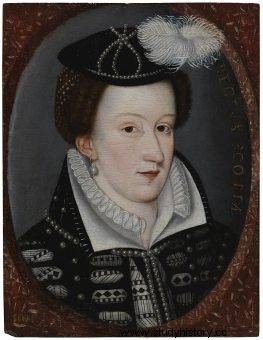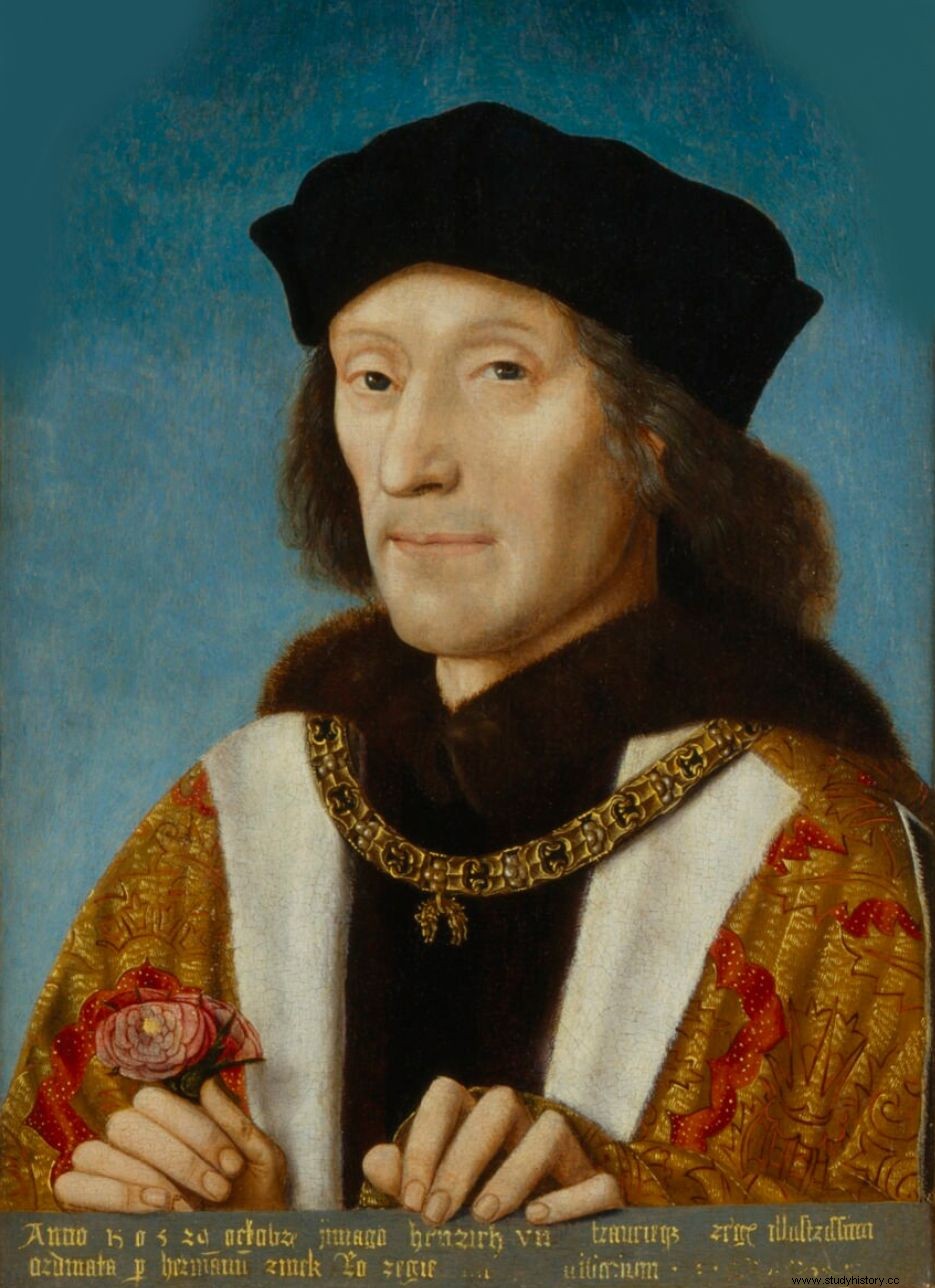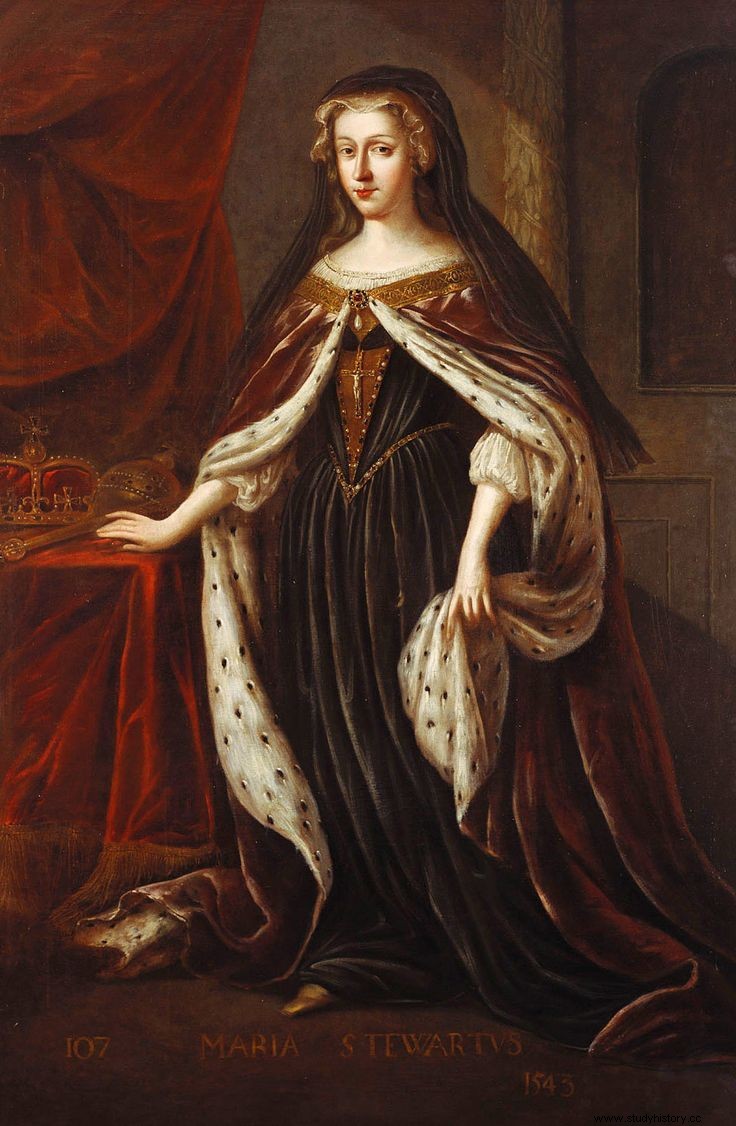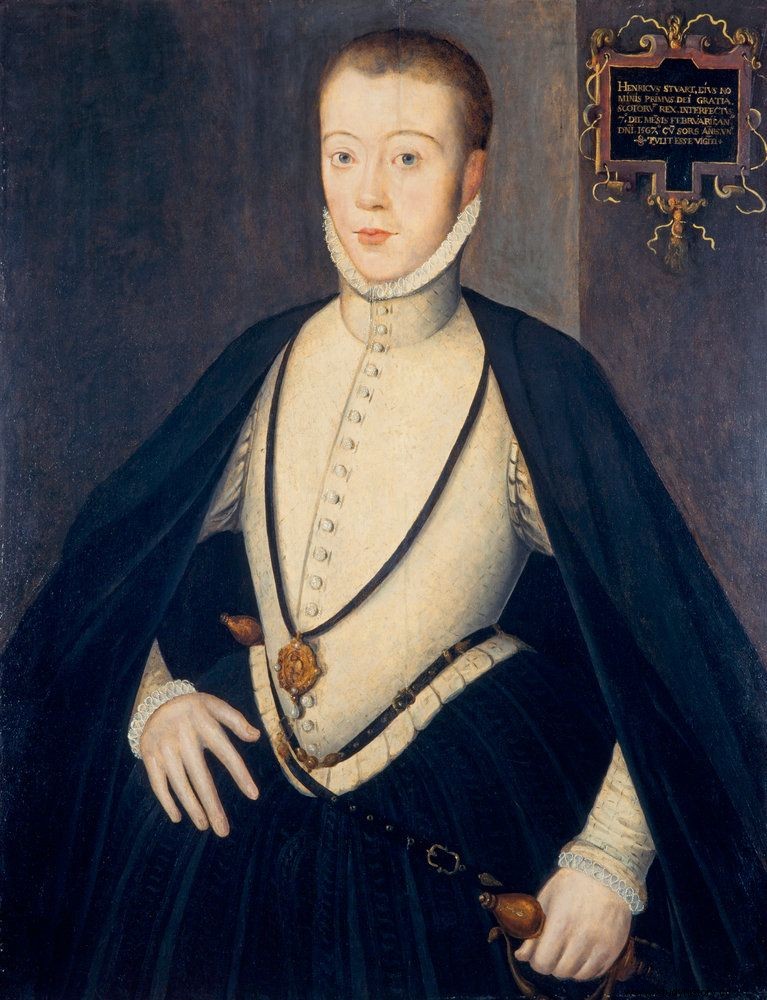She was the first queen to be put to death in a lawsuit. She received a sentence after several years in prison. And yet, in her youth, nothing foreshadowed such a fate. The Scottish crown had been put on her while she was still in diapers. She became the ruler of France before the age of eighteen. How did she find the scaffold?
Mary, the only child of King James V and his second wife, Mary of the House of Guizius, was born at Linlithgow Palace near Edinburgh on Friday, December 8, 1542. The girl was less than a week old when she inherited the Scottish throne from her father. She was crowned as a baby in diapers on August 9, 1543.
"During the ceremony the nine-month-old baby transformed into an anointed queen, endowed with the sacred powers of majesty which can only be given by God and for which only before Him can one be accountable ”- British historian John Guy, author of the biography , describes this event, "Mary, Queen of Scots. The True Story of Maria Stuart ” (this book became the basis for a film devoted to Maria, which was released in Polish cinemas in January this year).

Maria Stuart was the first queen to be put to death in a lawsuit.
Maria was not destined for a peaceful and smooth life. She had many enemies already in the cradle, and her childhood was marked by her mother's struggle to keep the throne. The girl was quickly sent to France - she was promised to the local heir to the throne, Franciszek. This could not please Henry VIII Tudor, who sat on the throne of England. His goal was to subjugate the rebellious Scotland and sever ties between it and France.
Great-granddaughter with the right to the English throne
Not without significance for the English monarch was also the fact that Maria had grounds for claiming the rights to his crown. As we read on the official website of the British monarchy:“Her claims to the English throne were almost as well founded as to the Scottish throne. As the great-granddaughter of Henry VII, Maria was entitled to the English crown after the children of Henry VIII. " Elizabeth, the future rival of the young ruler, English Catholics did not take into account at all - after all, she was the daughter of the removed and lost Anna Boleyn.

Maria was the great-granddaughter of Henry VII and therefore also entitled to the English throne.
Thanks to the rights to the throne of England and the engagement with a French dolphin, Maria was able to implement the idea of a Franco-British empire. No wonder there were high hopes for it. She herself seemed to meet all the expectations of French relatives. "She is as pretty and looks as good as a child her age can look like" Her grandmother wrote about her. "Her hair is auburn, her complexion is great, and I think when she grows up, she will be a beautiful girl, because her skin is soft and white."
At the same time, the six-year-old Scottish queen was graceful and self-confident, and also smart, resourceful, loyal and sympathetic. She had a personal charm and the ability to have an interesting conversation, also with people who were much older than her. The King of France, Henry II, loved her - he called her "my daughter" and gave Mary priority over all his children, with the exception of the dolphin, of course. He also took care of her education - she was educated according to an almost identical program as her future husband.
The white of the wedding dress, the white of the widow's veil
When, as a result of an unfortunate accident at the tournament, Henry II died, and Franciszek became king of France, Maria was 16 years old. The dolphin, although a year younger than her, had already exceeded the minimum age for independent rule, but seemed completely unprepared for this role. He did not inherit political talents from any of his parents, and he was sickly and ungrown. His subjects even called him le petit roi - "little king".
On the day of the wedding, which took place on April 24, 1558, Maria completely overshadowed the groom. She presented herself in a shiny white gown that accentuated her perfect skin and dark hair. She did not care that the color was the traditional mourning color of the French court. On the most glorious day of her life, she wanted to shine like a star.
By her side, thin and short, Francis matched his wife like a flower in a sheepskin coat. Unfortunately, it soon turned out that although he really loved his partner, another powerful woman with whom Maria could not compete had an important place in his heart. She was ... her mother-in-law, Catherine de Medici, and it was with her that the girl had to fight an unequal and doomed to failure war for position and influence at the French court.
The Queen's mother did not like her daughter-in-law's attachment to her relatives - the influential and ambitious Gwizians. She was also driven by jealousy for her son's feelings. In addition, Maria personified everything that Catherine lacked, when many years earlier she was herself the fiancée and then the wife of a French dolphin. She came from a royal family, brought a crown as a dowry, and in addition was attractive and full of energy. She was liked from the beginning - and Francis' mother struggled for many years to gain a strong position.
The conflict between the women did not last long, because Franciszek died after a two-year reign. His eighteen-year-old wife had nothing to look for in France. The last words she uttered as her galley set sail for Scotland were: "Adieu, France. It's all over. I think I'll never see your shores again. ” .
Scandal follows scandal
When eighteen-year-old Maria returned to Scotland, she found the country burning in political and religious struggles. She was a Catholic who had spent most of her life in France, and a woman too, so neither representatives of the local aristocracy nor Protestants saw her as their queen . Moreover, the foreign customs that she brought with her did not please the conservative Scots. The conspiracy gave rise to a conspiracy, and the ruler had to fight her position.

There was no warm welcome for Maria upon her return to Scotland.
Especially a young Piedmontese, David Rizzio, who came to Scotland in 1561 in the retinue of the Savoy's envoy, Count Moretta, became a bone in the throat of her countrymen. The monarch's ability to play the lute attracted the attention of the monarch. He very quickly won her favor and gained enormous influence on Maria, becoming, to the barons' indignation, her secretary and - as rumor had been - her lover.
The dislike of the influential official reached the English court. Elizabeth Tudor, although she herself was known for her close relations with her favorites, criticized both the relationship itself and the high position of Rizzio. She even wrote that the Scottish Queen "loved and favored him, giving him more influence than it would be good for him or his interests and honor."
Unfortunately, Rizzio, who did not help himself by boasting about his role, was not the last arrogant at the Queen's side. After many adventures, she decided to marry Henry Stuart, Lord Darnley. At first he was even friends with the secretary; they often played cards and chess together. In the end, however, he believed the rumors about his wife's affair. He was also convinced that he himself was merely a paper king, while the actual rule rested in the hands of the queen and her alleged lover. Eventually joined a plot to eliminate the inconvenient secretary and incapacitate the queen .
Is he a husband or not?
The plot was well planned, and David Rizzio's career ended abruptly and bloody. Initially, it was intended to be held on March 7, 1566, the day before the opening of parliament, but due to Maria's departure, the date was postponed by two days. The conspirators wanted the Queen present. They intended to avoid murder and coup allegations by allegedly catching lovers in flagranti .

Henry Stuart could not stand Maria's favor for Rizzio, so he took part in the plot on his life.
At dinner time, the bombers (along with Darnley) burst into Holyrood Palace, where Maria was staying, and killed the secretary huddled at her feet. The pregnant ruler experienced a double shock. Not only did she witness the brutal murder of the favorite, but her own husband was involved in the plot! Henry reportedly regretted his role and begged his wife for forgiveness the very next day.
The queen knew what she had to do:on March 21, she issued a proclamation clearing her husband of all charges. She threatened to declare anyone who alleged the king was involved in the plot a traitor to the state. So her husband was officially clean of hands, but Maria began to treat him even more reluctantly.
Three months later, in the morning of June 19, 1566, after a long and hard labor, the queen gave birth to a not very pretty baby boy. Darnley recognized him on the same day, thus cutting off any rumors that could undermine little James's right to the throne. Maria, in the presence of the gathered courtiers, reportedly said then: "Lord, God gave us, the Lord and me, a son, I did not conceive him with anyone else but with the Lord" . Hearing this, Henry blushed and kissed the child - the future king of Scotland and England.
Royal Prisoner
The father, however, did not rejoice in the heir - he was murdered on the night of February 9-10, 1567, and Maria hastily married the Earl of Bothwell. This sparked another scandal. As a result, the Queen eventually abdicated in favor of her son, and shortly thereafter fled to England, where she was imprisoned.
Elizabeth could not decide what to do with her defiant cousin. Maria spent almost two decades in prison. She constantly wrote letters to her son, who was brought up not only in the Protestant faith, but also in the belief that his mother had murdered his father in order to marry his lover .
Years later, the unhappy, crownless and removed queen was embroiled in a conspiracy against Elizabeth, which cost her her life. However, she was so reconciled with her fate that she did not rebel. She intended to become a martyr for the Catholic faith - argues John Guy in the book "Mary, Queen of Scots. The True Story of Maria Stuart ”. "I am fully ready and very happy to die and shed my blood for Almighty God, my Savior and Creator, and for the Catholic Church," she stated before her death.
Maria was beheaded on February 8, 1587. Elizabeth, who signed the death warrant, outlived her by 16 years. It is said that on her deathbed she gave the name of Jacob, the son of her rival, as the heir to the English throne. Whatever it was, on July 25, 1603, James was crowned King of England on July 25, 1603. He connected the two quarreling countries with a personal union, which, after more than a century, turned into a real union. Some time later, the king transferred his mother's body to the crypts in the chapel of their ancestor Henry VII at Westminster Abbey. The current reigning British ruler is a direct descendant of Maria Stuart.
